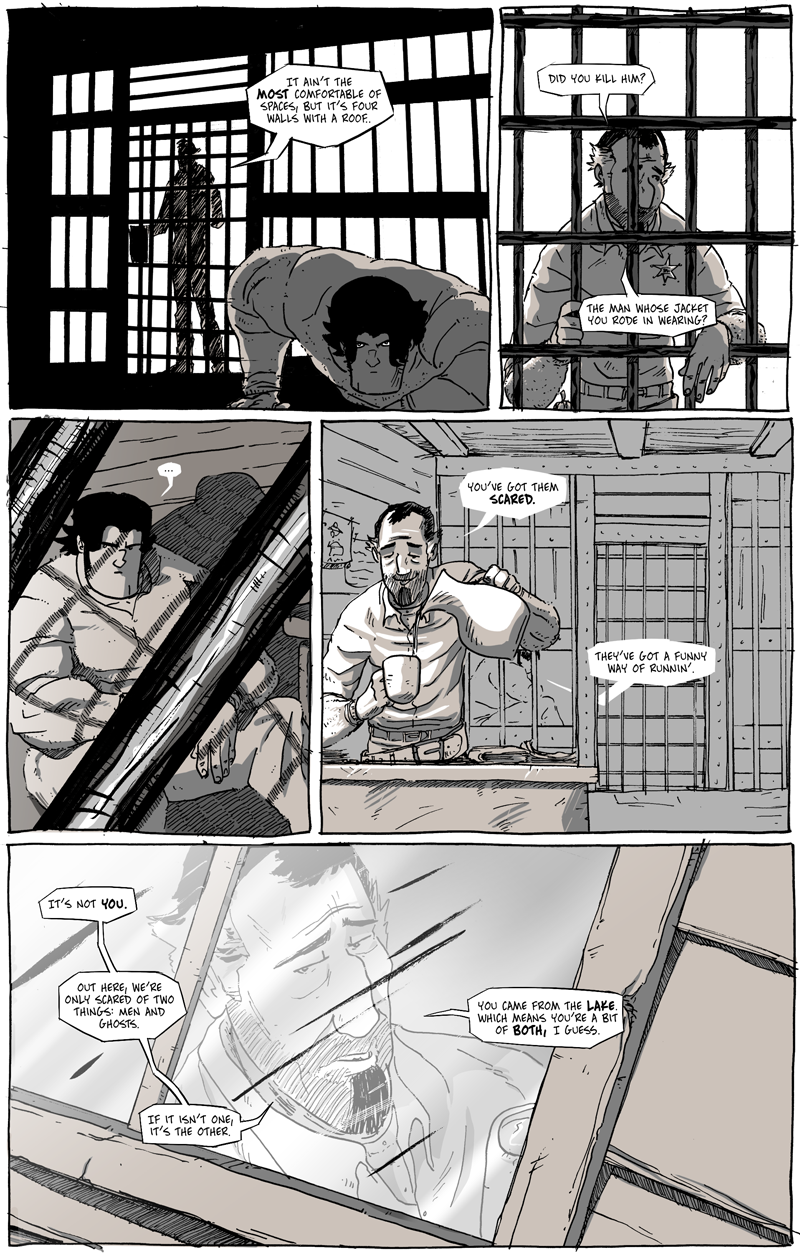Men and Ghosts
More than any scene so far, this scene between Long John and Sheriff Spencer caused me the most grief, both visually and prosodically.
In terms of text, this scene needed to do a lot of things in terms of exposition. So, instead of how I wrote the pages previous to this scene, I actually started the pages of this scene script-first. At the very least, writing it this way got the ideas out of my head and onto the page, so I had something to work with. But––good god damn––these pages went through so many revisions that I’m kind of glad I don’t have the original passes on the drafts, because it is probably completely different from the original pass (and, perhaps, even intent).
What I wanted to avoid was having the sheriff be simply an infodump because that would belie that key point to his character, that he wants to do good, but he’s a coward. So, he’s a doormat because they leave him alone.
Once I had a set of scripts I was happy with, I realized I had about four pages of this scene to draw. The problem was that the jail (as were most jails back then in small mining towns) is very small, which means there are only so many “places” to put “the camera” (I’ll talk about the controversy of using film terminology to describe, and filmic language to create, comics at a later date). Since this was a conversational scene that took place in a very small room, I suddenly worried about how to keep the look and panel compositions interesting over the course of these pages. However, it did give me some room to play, but it was the first time I had encountered the situation one hears about in film regarding filming a conversation in a diner booth––there are only so many ways to make that look interesting. Luckily, being a comic, I don’t have to obey the laws of camera placement because everything in the frame is fiction.



Discussion ¬